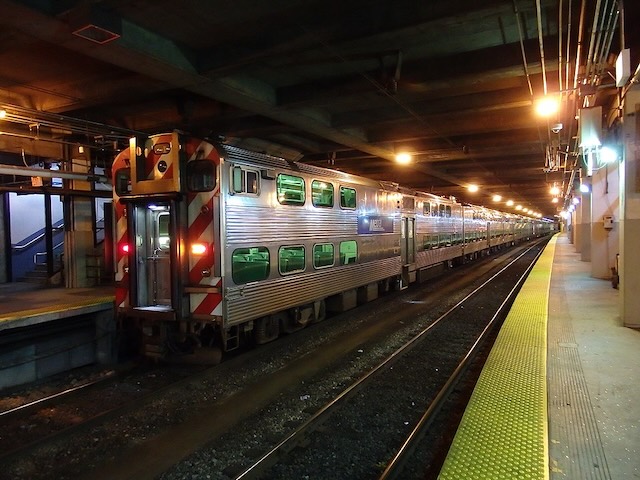Transit’s fiscal cliff is the responsibility of transit agencies, advises the Chicago Tribune, and transit riders, taxpayers, and legislators should not be panicked into giving the agencies huge amounts of money to make up for this supposed crisis. Noting that Metra (Chicago’s commuter-rail agency) is paying its lobbyist more than $4.6 million to get more funding from the state, the Tribune suggests that money would have been better spent operating trains.
The fiscal picture for Chicago transit service is dim, but whose fault is that? Photo by ????.
The Tribune refers readers to a McKinsey report released last December that points out that many transit agencies are wildly inefficient. Some agencies spend three times as much, per vehicle revenue hour, operating buses as others. McKinsey also found “little correlation” between the amount of money agencies spent on capital improvements and their performance.
Based on findings such as these, the Tribune warned Chicagoans to be wary of transit agency demands for more money when the agencies could solve the fiscal crisis themselves by operating more efficiently. Among other things, McKinsey specifically encouraged agencies to reduce overtime costs, design more fuel-efficient routes, and ensure that capital expenditures are more effectively spent. Of course, these recommendations assume that transit agencies want to be more efficient, but the agencies seem to believe it is easier to create a panic and demand more taxpayer funds than it is to streamline operations.
While it is good to see major media outlets such as the Tribune be skeptical of transit agency claims, transit inefficiencies have been a problem for many decades. The National Transit Database shows that, between 1991 and 2019, transit ridership grew by 28 percent but operating expenses grew by 127 percent and capital expenses grew by 159 percent (all dollars adjusted for inflation using gross domestic product deflators). These cost increases were only slightly offset by a 57 percent increase in fares per rider. This meant that operating costs per rider grew by 76 percent while capital costs per rider grew by 103 percent.
A lot of this money was spent on service expansions that riders didn’t particularly need or want. From 1991 to 2019, vehicle revenue miles of service grew by 94 percent but this increased ridership by only the aforementioned 28 percent and passenger-miles by 44 percent. Operating expenses per vehicle revenue mile grew by 17 percent indicating that service expansions were increasingly costly while decreasingly producing riders or revenues.
From 2019 to 2023, the last year for which data are available, ridership declined by 29 percent and vehicle revenue miles by 10 percent. But operating expenses grew by 1 percent, meaning expenses per vehicle revenue mile grew by 13 percent and costs per rider grew by 43 percent.
Costs have risen much faster than ridership or fare revenues because transit agencies have learned they can get more money from taxpayers without attracting new riders by making fallacious arguments about greenhouse gas emissions, low-income riders, and economic development. They spend more on lobbying than they do on figuring out how to redesign their downtown-centric transit systems to serve people throughout urban areas.
Moreover, for most of this time they have done so with the help of the media cheering on more funding for transit as if doing so would somehow perform miracles such as stopping global warming. If Chicago and Memphis are anything to go by, such cheerleading may have ended, which will be good for both taxpayers and travelers.








